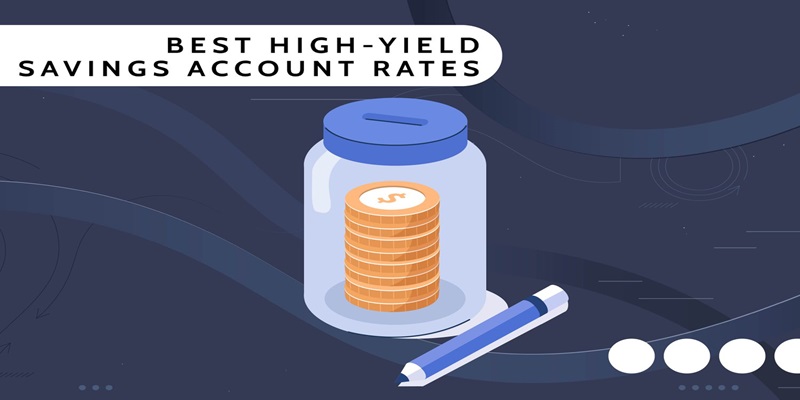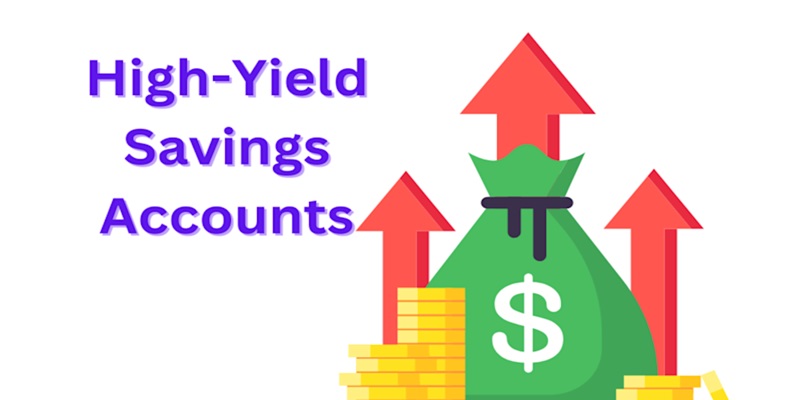Top 5 Savings Accounts For Impressive Yield Rates
Are you tired of watching your hard-earned savings languish in low-interest accounts? It's time to make your money work harder for you. High-yield savings accounts are an innovative solution for better returns without compromising security. You can earn more interest with the correct account while quickly accessing your deposited funds.
A few banks stand out in today's competitive banking environment due to their remarkable yield rates. Let us explore the top five high-yield savings accounts that will help you maximize your returns and achieve your financial goals as soon as possible.
Impressive Yield Rates From High-Yield Savings Accounts

High-yield savings accounts pay out significantly higher interest rates than traditional savings accounts. This enables one to maximize returns and watch one's money grow quickly. Most have APYs 5 to 10 times higher than the national average, making them appealing to any saver looking to boost their earnings.
Understanding APY
Annual Percentage Yield, or APY, is the rate of return you make on your savings over a year, factoring in compound interest. The APYs of high-yield accounts are usually measured between 1% and 4% or higher, depending on market conditions. That means your money works harder, earning more interest over time.
The Power of Compound Interest
One of the most essential benefits of a high-yield savings account is the power of compound interest. Once your deposited amount starts generating interest, the accrued interest will be added to the principal balance, earning further interest. This compounding effect can dramatically accelerate how much you save over time, especially in the long run.
Flexibility and Liquidity
When compared with many other high-yield investment vehicles, savings accounts allow for easy access to money whenever needed. Many high-yield accounts permit multiple monthly withdrawals without charging a fee for such transactions; this is a balance between potential earnings and liquidity. In this way, they are perfect for emergency funds or short-term savings goals.
Maximizing Returns With The Savings Accounts

Understanding High-Yield Savings Accounts
High-yield savings accounts pay interest rates many times higher than traditional savings accounts. They offer you the opportunity to keep on earning more on the deposited sum and come with ready access to your money whenever needed. With the proper high-yield savings account, you can earn more for your money.
Key Features to Consider
Interest rates are just one consideration when choosing high-yield savings accounts; here are a few things you'll want to examine closely. Look for accounts featuring:
Competitive annual percentage yields (APYs)
Low or no minimum balance requirements
Minimal fees, mainly monthly maintenance fees
User-friendly online and mobile banking platforms
FDIC insurance for peace of mind
Top 5 High-Yield Savings Accounts
1.Online Bank A: 2.50% APY, no minimum, and zero monthly fees make this one shine.
2.Credit Union B: Has a 2.25% APY, a $500 minimum balance requirement, and good customer service.
3.FinTech Company C: A solid option that offers a 2.40% APY, no minimums, and innovative money management tools.
4.Traditional Bank D: Has a 2.15% APY, a $1,000 minimum balance, and a national network of ATMs.
5.Neobank E: Offers a 2.35% APY, no minimum balance, and integrates perfectly with budgeting apps.
With any of these high-performing accounts, you can expect your savings to rise substantially over time.
Understanding The Differences In Savings Account Features
Interest Rates and Compounding Frequency
Interest rates will catch most people's attention when comparing savings accounts, but it's essential to see past the published Annual Percentage Yield (APY). Also, look at how often the interest compounds—daily, monthly, or quarterly. More frequent compounding can result in higher overall returns, even with a slightly lower interest rate.
Minimum Balance Requirements and Fees
Many high-yield savings accounts require a minimum balance. Failure to maintain this balance may result in reduced interest rates or monthly fees. Be sure to assess your financial situation and choose an account with a minimum balance you can comfortably maintain. Additionally, scrutinize the fee structure, including monthly maintenance fees, withdrawal fees, and wire transfer charges.
Access and Withdrawal Options
Consider how you will need to access your money. Some online savings accounts come with ATM cards; others require transferring funds to linked checking accounts. Check the ease of withdrawals, transfer limits, and processing times. Remember that federal regulations also limit some types of withdrawals from savings accounts to six per month, so know how your chosen account enforces this restriction.
Additional Features and Benefits
Look for accounts that offer features aligning with your financial goals. Some may provide budgeting tools, automatic savings plans, or round-up programs that transfer spare change from purchases to your savings. Others offer sign-up bonuses or higher rates for more significant balances. These extras can enhance your saving experience and boost your returns.
Factors To Consider When Choosing a High-Yield Savings Account

Some critical factors must be considered in any quest for the best high-yield savings account. Understanding these elements will help you maximize your returns and find an account that aligns with your financial goals.
Interest Rates and Annual Percentage Yield (APY)
The most important is the interest rate, usually given as the Annual Percentage Yield (APY). The higher the APYs, the more money in your pocket over time. Remember that rates may change based on market conditions and Federal Reserve policies.
Minimum Balance Requirements
Many high-yield accounts require a minimum balance to avoid fees or to get the advertised APY. Choose one that offers terms you're comfortable with.
Fees
Look for low-fee accounts. Some standard fees include monthly maintenance fees, fees for excessive withdrawal, and wire transfer costs. Some banks will even waive those fees if you maintain a minimum balance or satisfy other conditions.
Account Features and Access
Think about how you'll interact with your account. Go for the ones that offer:
Mobile banking apps that are user-friendly and online banking platforms
ATM access, if needed
The possibility of easy transfers between accounts
Fdic Insurance
Ensure the bank is FDIC-insured to protect your deposits of up to $250,000 per account holder per bank in case of bank failure. This coverage applies to each ownership category.
By carefully examining these, you can rightly choose a high-yield savings account that pays great returns while still meeting your specific financial needs.
Maximizing Your Financial Future
With these top high-yield savings accounts, you've done vital work toward maximizing your financial potential. Remember that the correct account depends on your needs and goals. Look at minimum balances, fees, and accessibility as you choose. While rates will change over time, selecting a well-reputed bank with a consistently competitive yield will do you well over the long term.